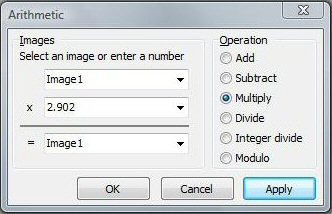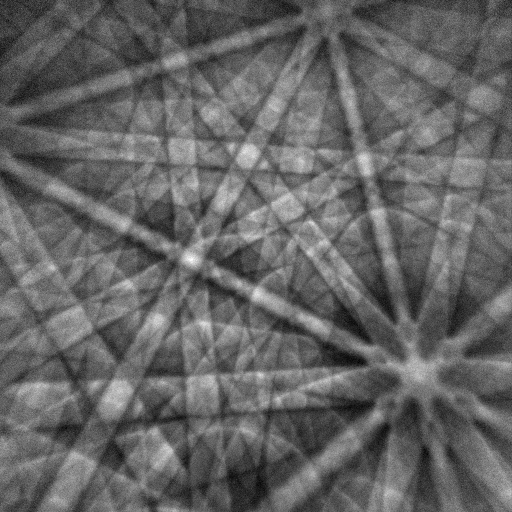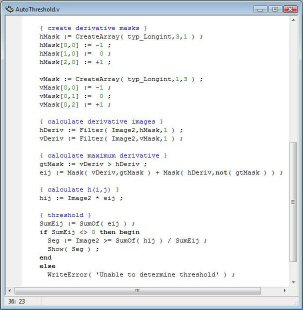
|
Award-winning V++ software from Digital Optics makes advanced scientific imaging and spectroscopy easy. Sophistication, speed, power and full Windows compatibility all come together in a single seamless package. V++ is used in more than 60 countries for thousands of applications in physical, biomedical and forensic sciences. |
||
|
Hundreds of Functions V++ incorporates many hundreds of image processing functions, including brightness, contrast and gamma corrections, advanced color processing, shading corrections, geometric transformations, linear and non-linear filters, Fourier processing, histograms, intensity profile plotting, image statistics, image arithmetic, logical operations, relational operations, extended image and complex mathematics, morphological processing, automatic blob counting full object shape analysis, and much more…
Advanced Data Types V++ leads the precision scientific imaging industry with its extensive support for advanced data types that range from simple binary and byte images to 96-bit floating point color and 128-bit complex images. All data types are supported transparently in every imaging operation giving you unprecedented choice and precision for your scientific applications. V++ also provides 100% support for 3D data in the form of image “stacks” or “sequences” that can be played as movies and even exported as AVI video clips. Digital Optics’ proprietary Intelligent Image Display™ technology provides for optimum display of all images including the extensive range of advanced data types.
Image Capture V++ is fully integrated with advanced digital cameras, video frame grabbers, and scanners. All hardware features are accessible, including controlling multiple devices simultaneously (even devices of different types). Innovative technology compresses all of the functionality of your cameras and frame grabbers into an incredibly small on-screen footprint.
|
Connectivity As well as cameras and frame grabbers, V++ can control a variety of laboratory equipment including scanners, filter wheels, microscope stages and more. You can automate complex serial communications tasks and make full use of Dynamic Data Exchange (DDE), with V++ acting as either a server or a client. Automation with VPascal™ VPascal is a full featured high-level programming language for automating imaging tasks. It has expressions, looping, control structures, variables, functions, multi-tasking and much more, but remains easy to use. VPascal implicitly understands image, vector and matrix math so you can calculate complicated image expressions in a single line of code by simply writing out the formula. Your programs can create their own toolbars and menus.
You can even generate programs automatically with the built-in recorder. There are more than 700 pre-defined functions plus full support for all image and sequence types. If you need to, you can even call your own external library routines. Click here to find out more about VPascal. The V++ Advantage Add to all of this the widely acclaimed quality of Digital Optics documentation and user support, and you begin to see why scientific researchers all over the world are turning to V++ for their imaging and spectroscopy needs.
Electron microscope image of a virus. Courtesy of School of Veterinary Sciences, Massey University, Palmerston North, New Zealand.
|
|
|
||
Digital Optics™, V++™, VPascal™, VAutomation™,
VSpec™, CameraBar™ and VideoBar™ are trademarks of Digital
Optics Limited.
Other product names and references may be trademarks or registered trademarks of their respective holders.
Entire web site is Copyright © 2008, Digital Optics Limited. All
rights reserved.








